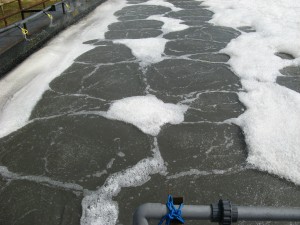Case Studies
Treatment of High Strength Resin Production Wastewater
Full-scale Incineration of this wastewater had proved very expensive due to the fuel input required and the ongoing incinerator maintenance costs. The polymer manufacturer sought treatment alternatives to save money. Initial biotreatment pilot work indicated that biotreatment was not feasible using conventional activated sludge technology even when the concentrated wastewater was diluted due to the toxic nature of the contaminants. Pilot work shifted to submerged fixed-film biotreatment technology using regular additions of MICROCAT – HX, and that proved feasible. The full-scale process was built using continuous MICROCAT – HX feed. The objective was to save money by replacing incineration of the wastewater due to its high costs and still meet stringent effluent quality guidelines.
Product Applied
MICROCAT®-HX Microbial Hydrocarbon Degrader
Treatment System
Wastewater Flow: 0.954 MGD (3600 m3/day). The wastewater charge to the system is a diluted, neutralized discharge with a chemical oxygen demand (COD) in the 2,000 to 7,000 mg/l range. The wastewater contains salt, solvents (e.g. MIBK), monomers, resin fragments, chlorinated solvents and aromatic compounds. The overall system consists of a neutralization tank, two 0.700 million gallon (2650 cubic meter) diffused air aeration basins in series, followed by one secondary clarifier and granular activated carbon polishing prior to discharge.
Results
With influent COD’s in the 2500 to 6900 mg/l range in the full-scale plant, discharge COD’s ranged from 85 to 165 mg/l. MICROCAT-HX-treated reactors consistently yielded high COD removals and produced very stable process operations. The HX-treated system had rapid upset recovery when the influent COD’s spiked upward.
Conclusions
MICROCAT-HX Hydrocarbon Degrader added regularly to an adequately-designed, submerged, fixed-film bioreactor allowed the resin manufacturer to replace costly incineration of their high strength wastewater, saving millions of dollars annually in wastewater disposal costs. High COD removal, process stability and rapid upset recovery characterized the full-scale biotreatment unit treating this complex and generally considered biologically-untreatable industrial wastewater.
